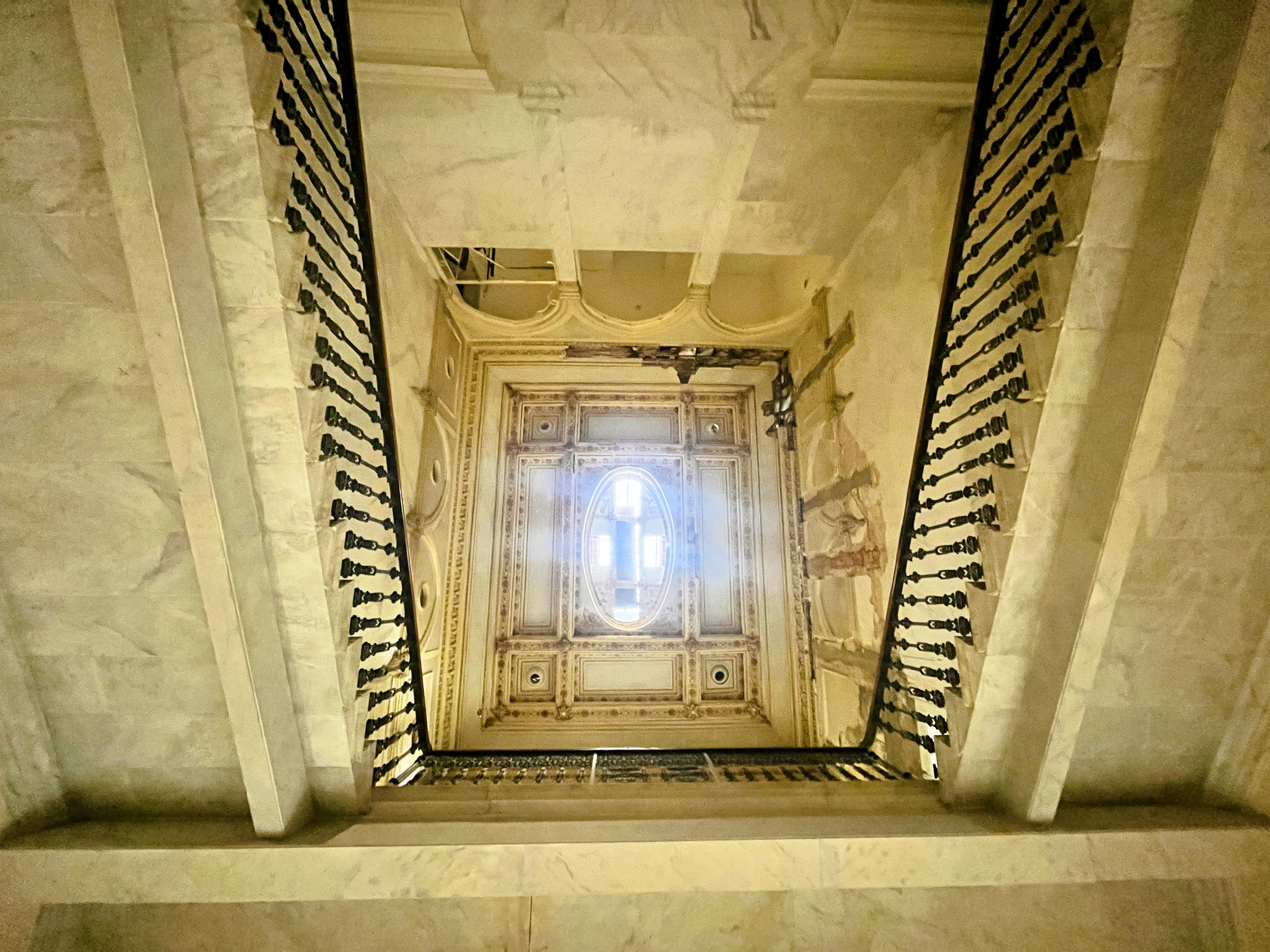
Beirut, Lebanon – With its grand Ottoman-era palaces and mansions, Beirut’s historical Sursock Street in the heart of the Achrafieh district – dotted with pockets of greenery, winding streets and small eateries – is a magnet for architecture and heritage lovers.
Most people know of the stunning stained glass windows of the Sursock Museum and the magnificent stucco ceilings of Sursock Palace, buildings that sit opposite each other. These were the homes of the aristocratic Sursock family, wealthy merchants with political ties to the Ottoman Empire, who were among Beirut’s seven founding families.
However, a lesser-known historical gem sits on the same street.
Tucked behind iron gates covered with trailing plants, the slate-blue Villa Mokbel, a former Sursock property that dates back to 1870, has rarely been seen by the public – although a compelling photo of the wrecked villa taken after the 2020 port blast, with a mural peeking through a collapsed wall, significantly elevated its profile.
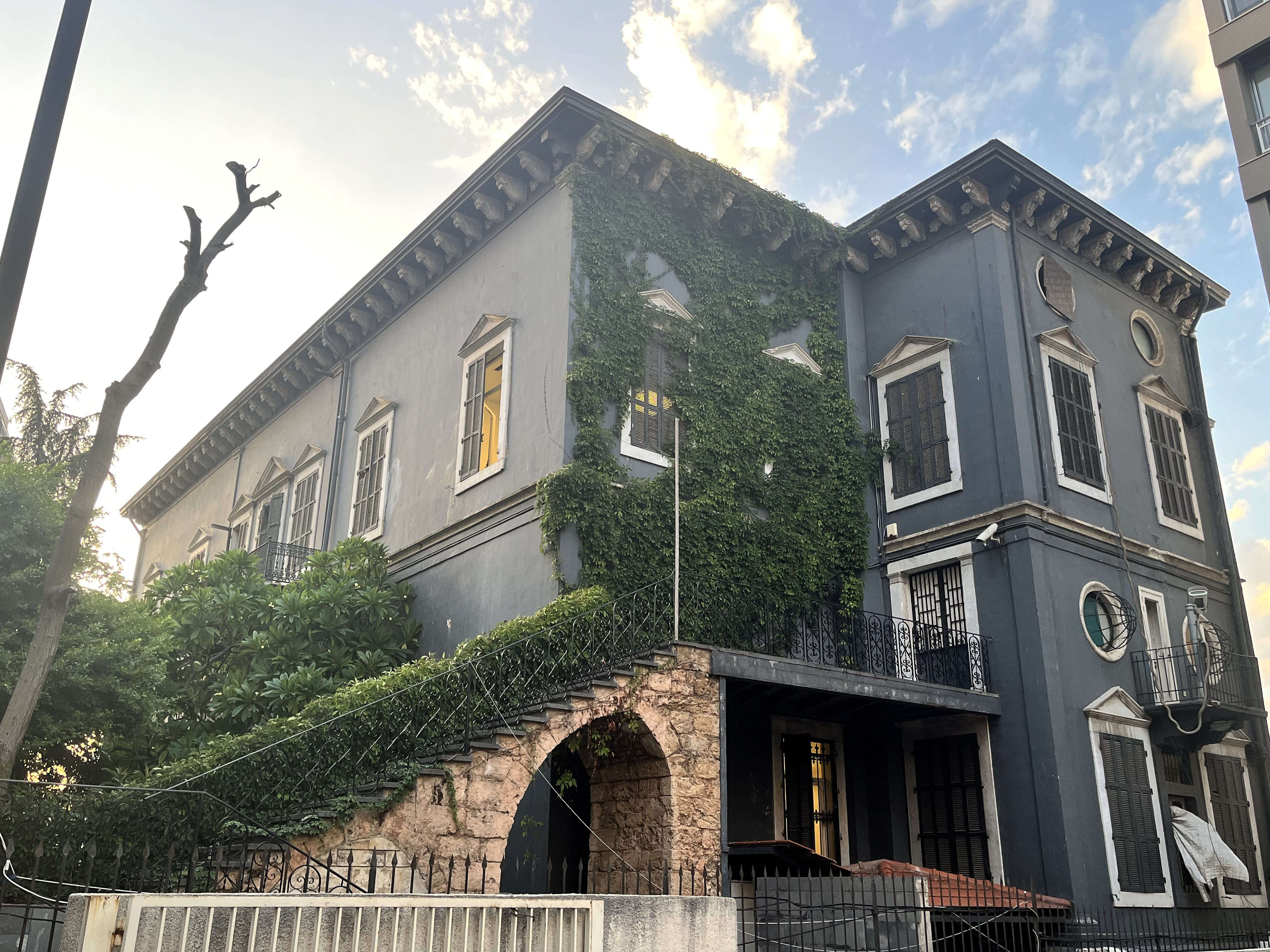
The explosion, triggered when 2,750 tonnes of improperly stored ammonium nitrate caught fire, killed 218, injured 7,000 and left about 300,000 people homeless. The blast was the third-largest in history after the atomic bombings of Hiroshima and Nagasaki, and the full force of it ripped through Villa Mokbel.
“The Sursock properties were the first beautiful big villas in Beirut, on the outskirts,” the villa’s owner Georgie Mokbel, who inherited the property from his father, tells Al Jazeera. “They brought architects from Italy who worked with craftsmen of Lebanon to create this unique Venetian-Florentine style, with a bit of Ottoman influences.”
The architects of Lebanese houses being built or renovated in Gemmayzeh and Pasture, down the hill from the more affluent Ashrafieh area, began to copy this style on a smaller scale, Mokbel adds, but still with triple arcade windows and red roof tiles. “Before this period, there were no roof tiles used in Lebanon. Now, this blend of Ottoman, Lebanese and Italian architecture is considered the typical house.”
Still grand after all these years
The villa that came to be known as Villa Mokbel was first owned by Alexandre Sursock. In the 1930s, Alexandre’s branch of the family left Lebanon, marrying into Italian royalty, and the villa was put up for sale.
Bought by multiple families, the lavish, 2,000-square-metre (21,527 sq ft) mansion was, at some point (Mokbel does not know when), divided into smaller apartments. Mokbel’s grandfather, Gebran Mokbel, a construction labourer-turned-real-estate-businessman, was one of those investors. He bought shares in the villa, seeing its palatial halls as an enticing investment.
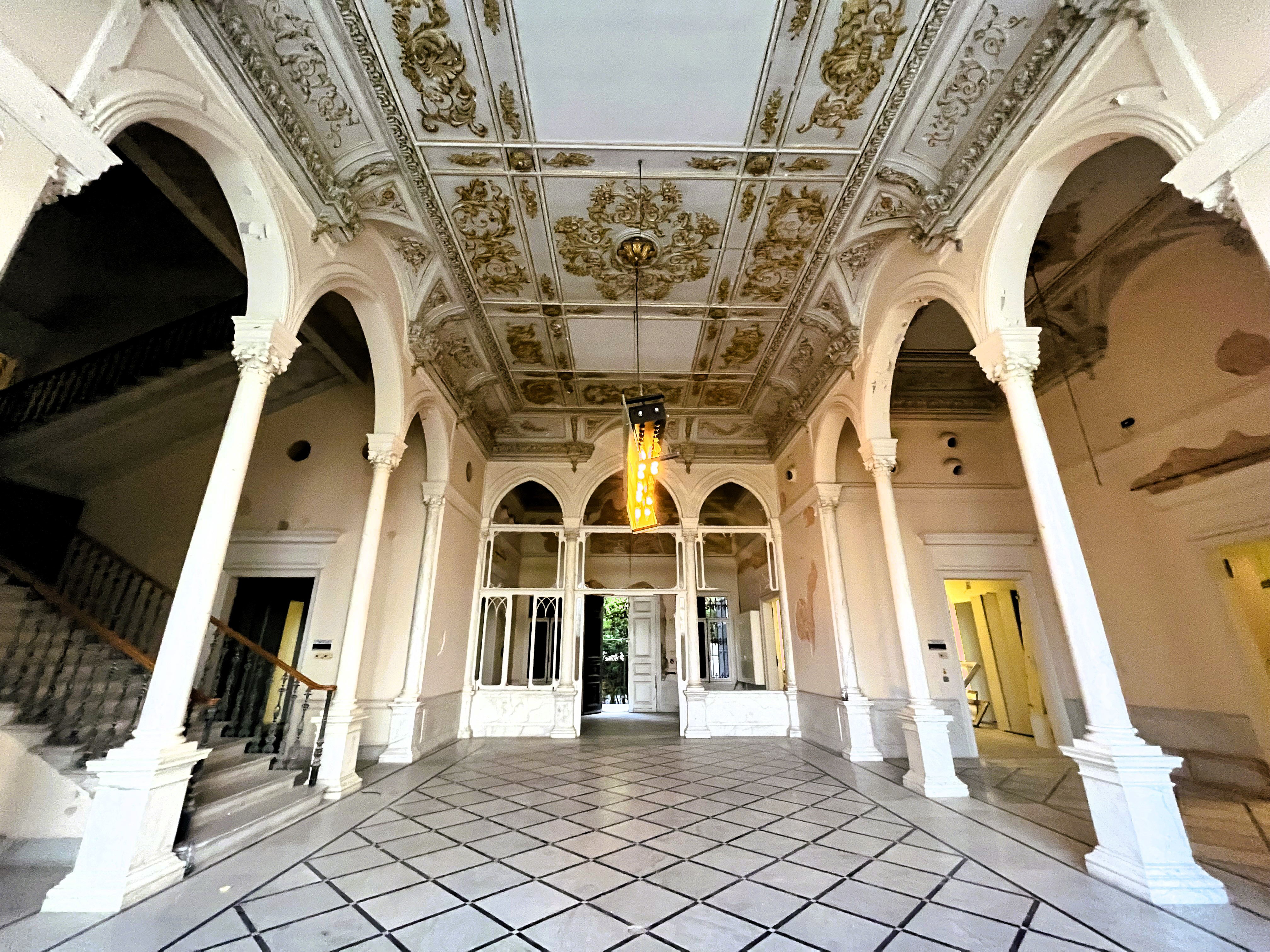
Spread over three stunning storeys, the villa boasts ornate doors, triple arches and sweeping marble staircases, with gold leaf detailing on the intricate ceilings and a gilded oval glass cupola over the stairwell. The towering ceiling and large windows drench the grand main halls in light, giving them an airy feel. And although the mansion is in desperate need of repair – ceilings need restoration and balconies and walls require reconstruction – it still holds the grandeur and beauty of its glory days.
In particular, Georgie Mokbel loves the exquisite details in the stucco ceilings and coving decorations in many of the rooms, which contain symbols and scenes that nod to their original functions. Classical depictions of fruit, wheat chaffs and cornucopias adorn the dining room, while entertainment rooms feature gilded musical instruments.
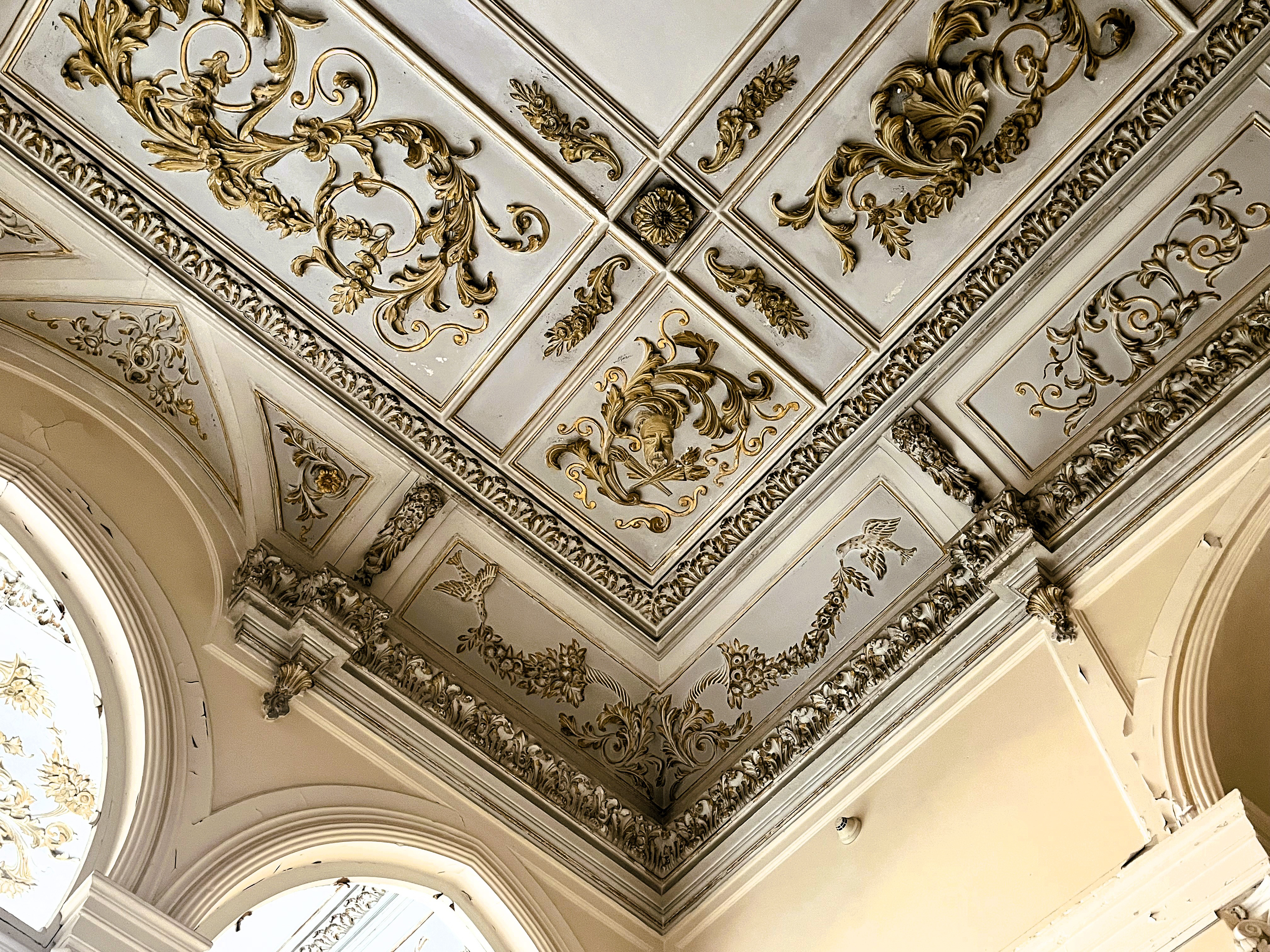
Over the years, the villa has seen grand parties; the Sursocks’ bourgeois standing and political affiliations meant they often hosted foreign dignitaries, royalty and Lebanon’s high society. It later served as a film set for Italian director Nino Zanchin’s 1969 film, Appointment in Beirut, and functioned as a school. But now, it sits empty.
The scars of civil war
The villa has also borne the scars of Beirut’s 1975-1990 Civil War – a bloody struggle between sectarian militias that saw a death toll of about 150,000 – as well as other conflicts. Most notably, the mansion was ripped apart in the August 4, 2020 port explosion; its stone walls crumbled and ornate ceilings caved in.
Many would have had their first glimpse of the villa after photographer Dia Mrad’s photo, published in Vanity Fair magazine, captured a mural of renowned Lebanese poet and writer Khalil Gibran visible through the collapsed walls. Gibran’s solemn and sorrowful gaze staring outward captured the devastation felt by many, as though he too was mourning the state of Beirut.
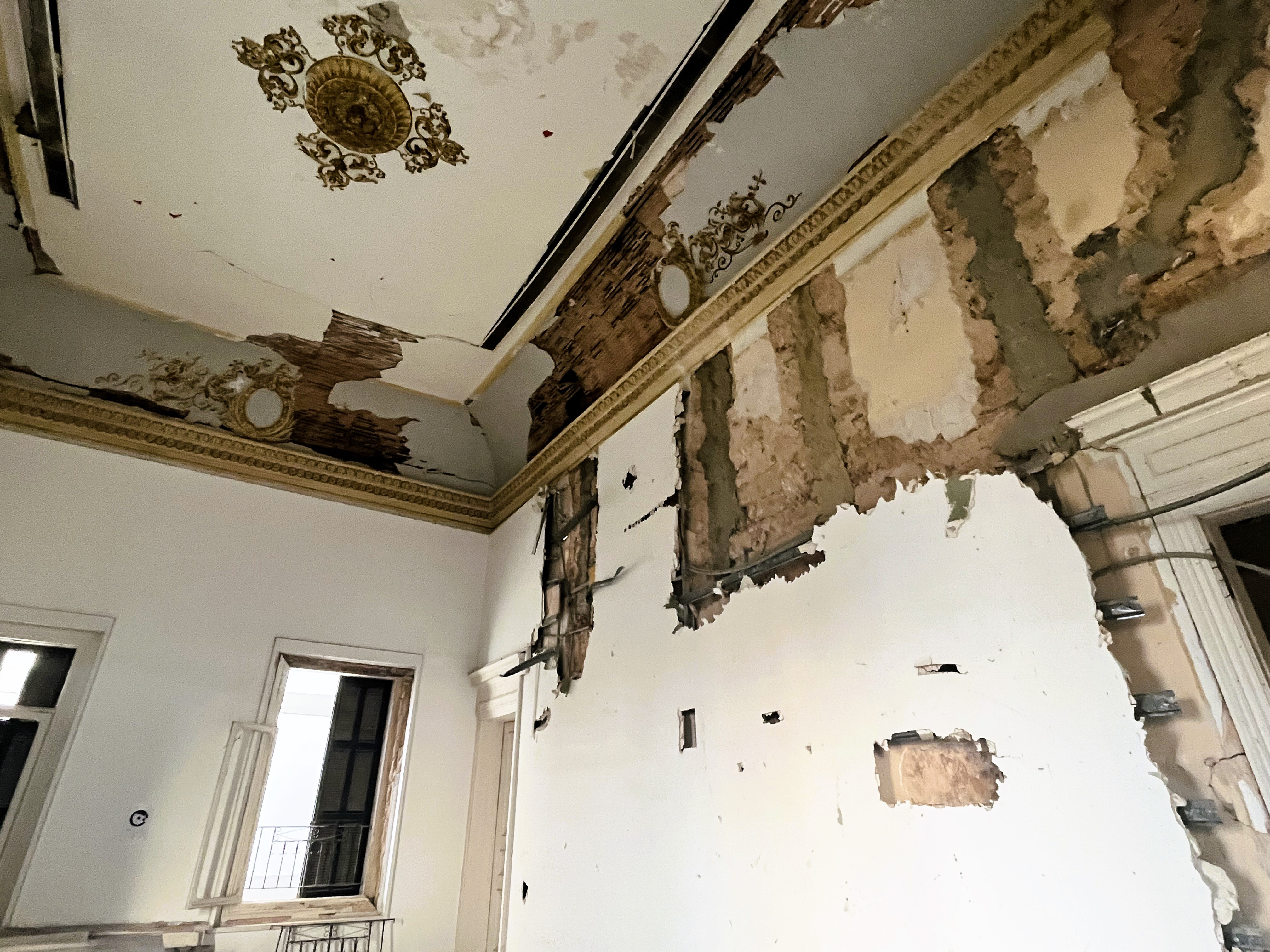
The history of the villa’s uses beyond a stately residence stretches back to World War II. Then, the state of Lebanon had asked for permission from the owners to store grain in the villa’s basement, “because they were afraid of famine, like there was in World War I”, Mokbel says.
Between 1915 and 1918, the Great Famine of Mount Lebanon resulted in the deaths of 200,000 people. The Allied forces had been blockading the Eastern Mediterranean to weaken the Ottoman economy and war effort, which had sided with Germany and Austria-Hungary. Compounded by Ottoman Empire Fourth Army commander Jamal Pasha barring crops from neighbouring Syria in response to the Allied blockade, and a locust epidemic, the famine became one of Lebanon’s darkest moments.
When the Ottoman Empire crumbled soon after World War I, Lebanon came under French Mandate control in 1923, before gaining independence in 1943, mid-way through World War II. The newly-formed government was keen to avoid a repeat of past events and tried to take precautions against famine, should blockades be put in place. In 1945, Lebanon joined the Allied war effort against Germany and Japan.
The agreement to store grain at the villa was for just that time and purpose – the house was empty as many owners had cut their losses and sold their shares. However, the government eventually turned the villa into a school for under-18-year-olds in the early 1950s and did not leave the building until 2000, after Mokbel’s family “forced them out with the court justice”, he explains.
By that point, Mokbel’s uncles and father had bought out the rest of the families with the goal of renovating the mansion. Heritage buildings were gaining popularity for their nostalgic charm and the family wanted to preserve this wonderful example of Lebanon’s history. “We renamed it Villa Mokbel,” he says.
But the building, suffering from six decades of minimal upkeep by the government, was in a “terrible state”, he says. The Mokbel family carried out some superficial repairs to make the space functional and usable again – patching holes from the war, adding a new coat of plaster and paint – but a full, historic restoration was a long way off.
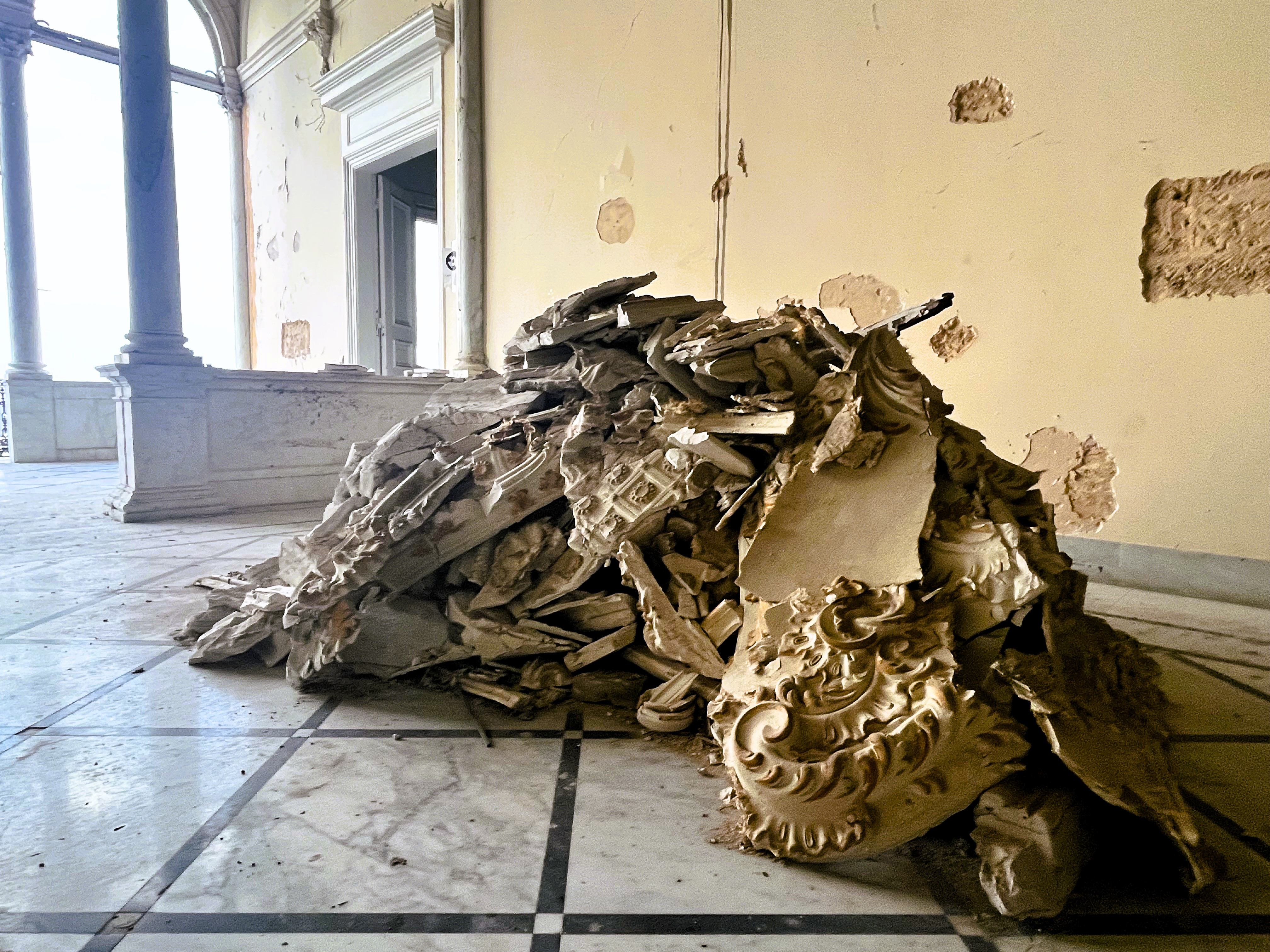
Villa Mokbel was then rented to Lebanon’s oldest business school, Pigier University, for a few years. Needing funds to repair it, the family chose to turn the villa into a business, allowing some of the rent to funnel back into repair costs. However, the 2006 war with Israel put an end to both the tenancy and further restoration plans as the villa once again suffered damage and the school sought a new home in the Hamra area.
In 2008, the communications company MC Saatchi discovered the villa and fell in love with it, offering to completely restore it for reduced rent. Within three years, the mansion had been restored to its former glory and the company remained a tenant until the 2020 port explosion forced it to leave.
‘An icon of Beirut’s golden age’
Three years on from the blast, Villa Mokbel is, once again, in dire need of repair. It did not qualify for aid, unlike some of Beirut’s other damaged buildings, because it is a “private property”, Mokbel says, adding that they “had a little help” from a local NGO, the Beirut Heritage Initiative.
Meanwhile, Mokbel has been opening the villa’s doors to visitors, hoping to spark interest from a business willing to renovate it for use as a boutique hotel, restaurant or venue for parties and other events. “It’s a big cost to restore such a place”, he says – one that requires a lot of materials and specialised techniques necessary for heritage building restoration.
In May 2024, We Design Beirut, a new design fair for local crafts and talent, will use the villa – “an icon of Beirut’s golden age” – as the setting for one of its main showcases, featuring local and international designers under the theme of preservation. One of the pieces, an intricate tapestry that mimics the villa’s triple arcade windows and ornate balcony, will hang in the place of missing walls and windows.
In its celebration of Lebanese heritage, artisanship and architecture, the exhibition may also help generate awareness about the plight of Villa Mokbel.
“We chose this beautiful villa for the exhibition to give them some exposure for support, because they weren’t able to get any from the NGOs,” Mariana Wehbe, the co-founder of We Design Beirut, tells Al Jazeera. “The villa will be presented as a living space and be able to tell its story as much as the design pieces on show,” she adds. “A lot of people didn’t even know of the existence of this place, so it’s wonderful to allow people to actually see it and who knows what might come from it.”
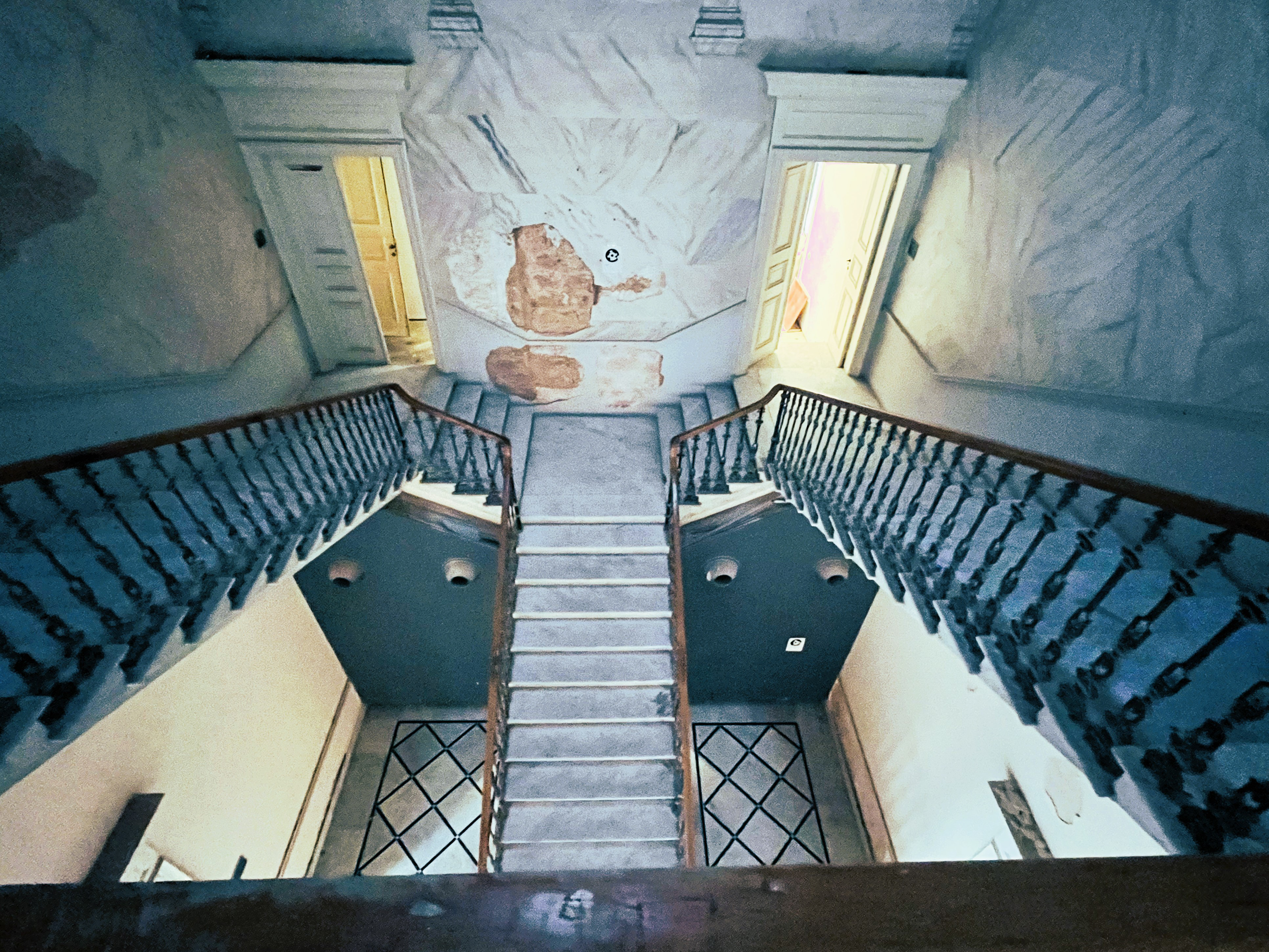
Until someone sees a more permanent future for Villa Mokbel, it remains in limbo. The family is repairing as much as it can, while seeking aid from new sources. Mokbel remains optimistic that someone will appreciate the architectural and historical significance of this storied mansion and want to help.
Beirut is full of abandoned heritage buildings on the verge of collapse. After the Civil War, owners did not have the funds needed to restore such places and they were left to rot. In the post-war 1990s, many were demolished to sell the land to property developers – a cheaper option than restoration.
The struggle to keep palaces like Villa Mokbel from such a fate has been the generational mission of the family.
“My grandfather and my father always dreamt of maybe living in this space but they never did,” Mokbel says. “But still, I think it’s important to keep this house alive in any way possible. It’s an honour to protect and preserve this piece of heritage. As a family, we think that old houses have a history and identity, a certain charm, which holds great value.
“People’s mentality is also changing regarding old houses – they’re more interested in them now than they were 20 to 30 years ago and they are seeing the value in them. The person who takes it would also have to be in love with it.”
